
Picture Books to Play With (Part 2)
Last May, I shared a list of books that our children have enjoyed. More than that, they were books that led to conversations or activities that we could do together. You can read Part 1 here, and here are some more!
 Once There Was a Raindrop
Once There Was a Raindrop
by Judith Anderson
This is one book in a series about science – other books by this author are about tadpoles, seeds and caterpillars. Reading them led to exploring seeds, caterpillars, and puddles outside. If your child likes these, they might also like books in the “Let’s Read and Find Out Science” series, or …
 The Magic School Bus Series
The Magic School Bus Series
by Joanna Cole
My daughter has been obsessed with these for years, and the ways to play with them are endless. Field trips, stories, letters, mini-reports to share with friends and family, pretending Mom is Ms. Frizzle…at one point she had renamed all her classmates to match the characters in these books. And because they are familiar to kids, it’s easy for them to join in the role play.
 Swimming, Swimming
Swimming, Swimming
by Gary Clement
This almost wordless book follows a boy through his day – getting ready to swim in his room, to the pool, and home again. Many details in the illustrations tell us about the boy and his friends, and kids who are familiar with swimming pools relate to the (sometimes funny) things people are doing. It’s a great way to get a conversation going, and even think about what we’d like to try next time we swim. Other wordless books are good too, but the everyday setting of this one made it work well for us.
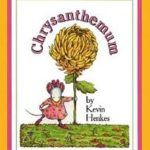 Chrysanthemum
Chrysanthemum
by Kevin Henkes
Kevin Henkes writes about everyday childhood emotions in a way that children find comforting and safe. This book is about teasing, and about being uncomfortable at school – repeating words from the book gave our daughter ways to express her own sadness and discomfort. Every child needs a chance to read about characters encountering difficulties so that they can see themselves as problem solvers too.
 The Snowy Day
The Snowy Day
by Ezra Jack Keats
This is a lovely, simple story about a boy’s walk in the snow. He makes a snowball to keep in his pocket (and wonders where it went, later!), makes snow angels, and slides down hills. Favorite line: “Down came the snow – plop! – on top of Peter’s head.” We got a lot of playtime mileage out of that one. It’s also available as a video made by Scholastic.
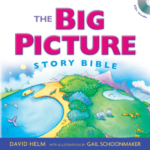
The Big Picture Story Bible by David R. Helm
My Learn to Read Bible by Tracy Harrast and Christine Schneider
Even if your family isn’t religious, the stories of the Bible come up again and again in other stories. They are also wonderful stories in their own right. These two children’s Bibles were popular with our kids, for the great illustrations and the simple but descriptive language. The Big Picture Story Bible also comes with a CD so you can listen to the text.
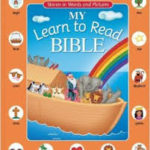 My Learn to Read Bible is made up of rebuses – little pictures replacing words, so that your child can use this book to learn to read. Lots of the stories can be acted out – our son enjoyed enacting David and Goliath over and over again on our bed.
My Learn to Read Bible is made up of rebuses – little pictures replacing words, so that your child can use this book to learn to read. Lots of the stories can be acted out – our son enjoyed enacting David and Goliath over and over again on our bed.

Feelings
by Aliki
This book gives children a sort of visual dictionary of all kinds of emotions, and the situations that lead to them, in cartoon form. For example, the page about “New Girl in Class” has a girl standing with her hands clasped and pink cheeks, wondering why everyone is staring at her, while one of the other kids is thinking “she looks nice.” It works as an example to start doing your own sketches to help your child process what’s happening in their lives. My kids just seemed to enjoy browsing the pictures.
George and Martha
by James Marshall
These are a collection of easy reader stories about clueless George and his kind friend Martha. They happen to be hippopotami, but the dilemmas they solve are for everybody (like what to do when your friend thinks you want to eat pea soup, but you don’t…). Great books for thinking about social behavior in a way that makes you laugh. And like the Kevin Henkes books, they also offer ways to explain problems.
 Frog and Toad Books
Frog and Toad Books
by Arnold Lobel
Like George and Martha, the Frog and Toad books are a series of stories about two friends who get into awkward situations and help each other out. Lines from these books were often quoted.
 Red Is Best
Red Is Best
by Kathy Stinson
A little girl loves everything red…much to her mother’s frustration. Great for thinking about favorites and why sometimes we don’t want to switch from something that is familiar. My daughter repeated lines from this book quite a lot.
 The Important Book
The Important Book
by Margaret Wise Brown
This book is often used as a model for poetry in elementary school classrooms. Recently my daughter and I have been playing a game where we talk about things using the frame. It’s a way to expand our conversation beyond the things we usually say, and a way to think about what makes things important to us. For example:
“The important thing about a beach is that you can get wet. The sun shines and you can dig sand castles and eat snacks. There are birds at the beach, and lots of people. But the important thing about a beach is that it’s for swimming.”
 Charlie and Lola Series
Charlie and Lola Series
by Lauren Childs
My son was really drawn to these in 2nd grade. Perhaps it was the illustrations, perhaps the everyday dilemmas this boy and his little sister encounter. They are really funny for the parent reader too. And they were acted out. At school, he made paper dolls of the characters and retold the stories using photographs.
 Fairy Tale Comics
Fairy Tale Comics
by Various Artists
This is one of a set of comic-style books. Fairy Tales, Fables, and Nursery Rhymes are all drawn as comic strips, making them easier for some kids to understand and enjoy. These are the basis of literacy – stories that come up over and over again – and the more familiar kids can be with them, the better. They also are great for acting out, maybe even with puppets. (And dad liked them, too.)
 Little Red Riding Hood
Little Red Riding Hood
by James Marshall
If your child is ready for a book with a bit more text, James Marshall has done several fairy tales, illustrated in a cartoony style and using everyday language. My daughter wore a red cape for awhile after enjoying this book (thanks to Grandma, who sews!).
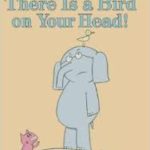 There Is A Bird on Your Head and other Elephant and Piggie books
There Is A Bird on Your Head and other Elephant and Piggie books
by Mo Willems
Mo Willems is a master at creating books where the reader knows things that the characters don’t. This makes them good books for recognizing emotional shifts or practicing perspective taking. Your child has to be ready for this – otherwise it’s hard slogging and they miss the joke. But when your kid is ready to see that they know something that elephant does not, these are great fun.
 Another by Mo Willems in the same vein is That Is Not a Good Idea. You could expand on them with a little bit of practical joking…
Another by Mo Willems in the same vein is That Is Not a Good Idea. You could expand on them with a little bit of practical joking…
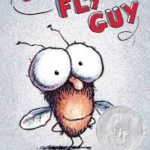
Hi Fly Guy
by Tedd Arnold
A boy has a fly for a pet. They have adventures – like when Fly gets lost and has to use his super smelling ability to find the boy on a picnic. Lots of buzzing noises went on when we were reading these…
 Once Upon a Potty
Once Upon a Potty
by Alana Frankel
The purpose of this one is obvious. My kids listened to the app version quite a lot, and eventually, they put the idea into practice.
What books are your child’s favorites? Feel free to share in the comments below.
Further information on reading with your kids:
- Scholastic: Why It’s Important to Read Aloud with Your Kids, and How to Make it Count
- ADAPT: A Trip to the Library
- 10 Ways Your Child with Special Needs Can Benefit from a Trip to the Library
- The Hanen books More Than Words and Talkability each have chapters about enjoying books and learning together through reading.

Reading can help you improve your language abilities, especially if the reading material combines familiar and hard themes. Thank you so much!
Pingback: Picture Books to Play With